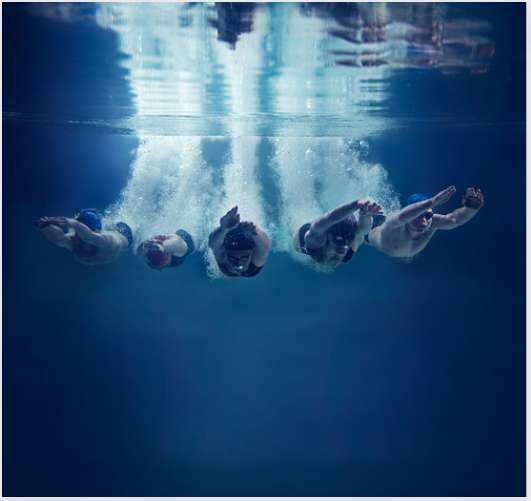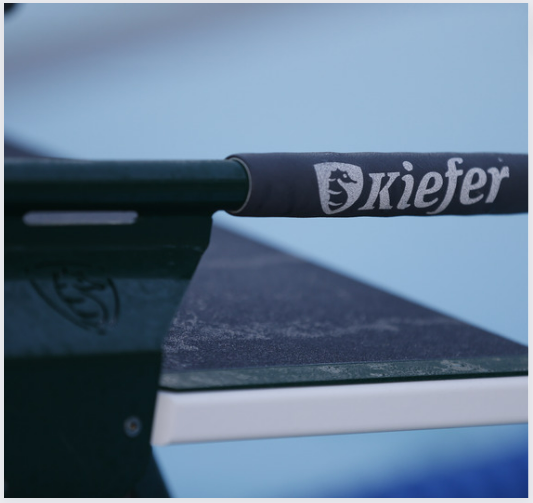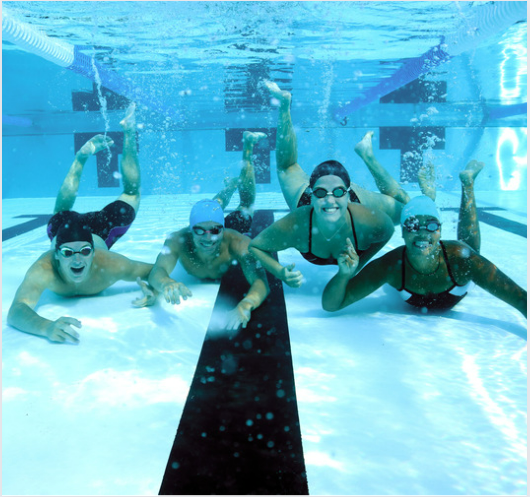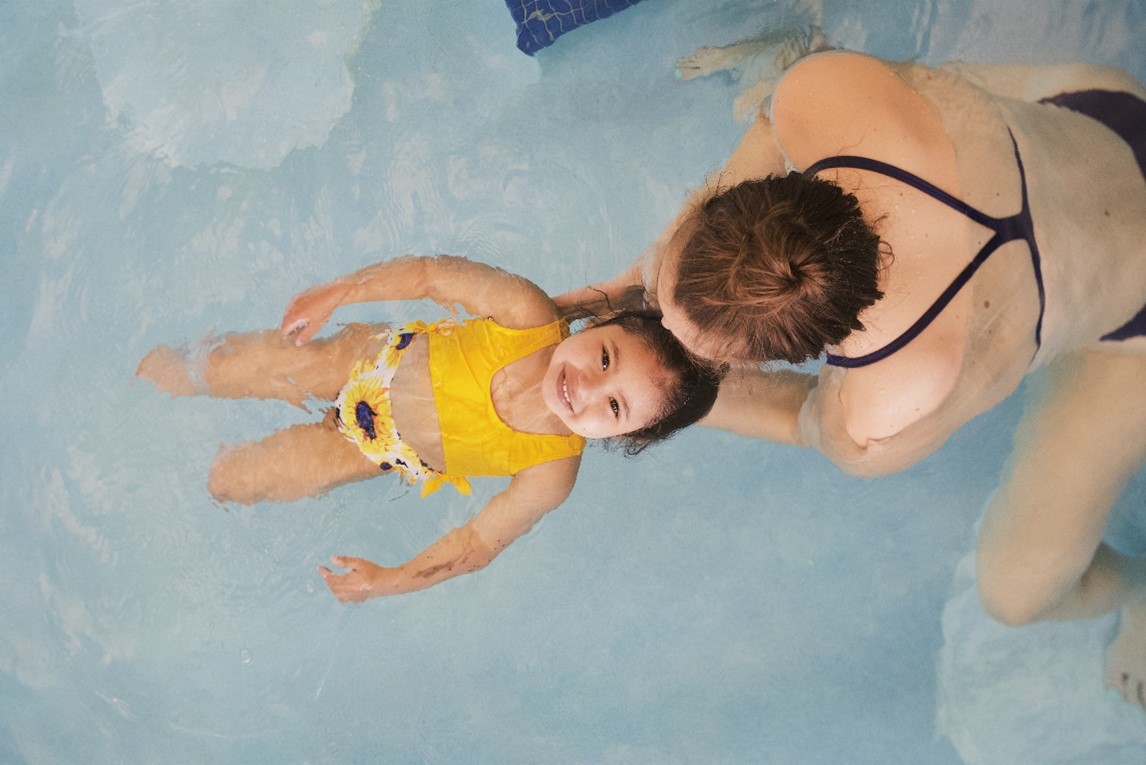Olympic Swimming
Rules for Competitive Swimming
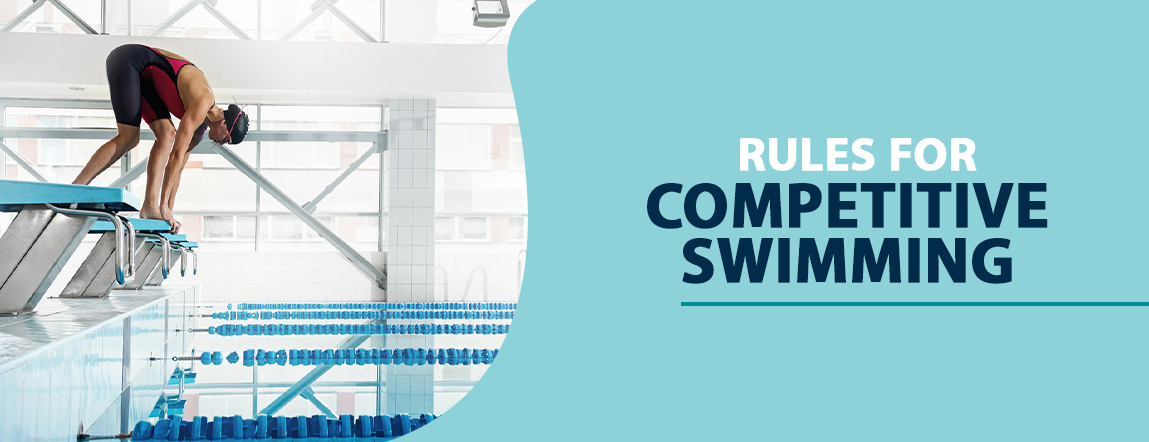
Rules for Competitive Swimming
As a competitive swimmer, you know referees will watch you closely as you propel yourself through the water to make sure you are swimming by the rules. You spend hours practicing and perfecting your form every week. While endurance and form are crucial to your performance, you should also understand the latest rules to make sure your practice is taking you in the right direction.
Basic Rules of Competitive Swimming
An organization called USA Swimming determines the rules and regulations of competitive swimming in the United States. The organization known as FINA sets the rules for international swimming competitions. Here are some of the basic swimming rules you should understand to help you practice and compete properly to avoid disqualification.
1. Starts
The referee begins by signaling competing swimmers with several short whistles. This lets them know it is time to begin the race. Swimmers will remove all clothing except their legal swimwear at this point. The referee then gives a long sound from their whistle to command swimmers to assume their starting positions. This can either be the starting platform, the deck or the water, depending on the race. Once all officials and swimmers are ready for action, the referee signals to the starter with an outstretched hand. This gives the starter control over the swimmers. The starter will tell all swimmers to take their marks, and they will assume their forward-start positions. Specific rules for forward-start positions include:
- Swimmers starting outside the water must have at least one foot on the front of the starting platform or deck.
- Swimmers already in the water must continuously contact the starting platform or wall with one hand.
Once all swimmers are in their starting positions, the starter gives the signal, and the race begins. If a swimmer doesn't immediately take their mark, the starter will command the swimmers to "stand up." Swimmers can disengage their starting position until they are once again told to take their marks.
2. False Starts
False starts usually result in a swimmer's disqualification. The following are instances of false starts:
- A swimmer starts the race before the signal. Referees can call this before the signal is given or after the race has concluded.
- A swimmer declares to the referee that they will not race. This is considered a false start.
Starting upon hearing "stand up" does not result in disqualification. The swimmer can still legally compete in this situation.
3. Disqualifications
As a competitive swimmer, you compete for the first-place prize. Disqualifications remove any chance at achieving that goal for a given race. Here are acts you should avoid so you can compete legally and strive for the gold:
- Committing a false start
- Behaving in an unsportsmanlike or unsafe way
- Grabbing or physically hindering another swimmer
- Entering a pool before another race has been completed
- Dipping your goggles in the pool before a race
- Finishing the race in a different lane than you started
- Grabbing lane dividers
- Standing on the bottom of the pool, except during freestyle races
Now that you understand the basic rules of swimming competition, you can explore some of the rules for the types of swimming you might compete in. Shop Suits & Swim Gear
Rules for Freestyle
Freestyle rules and regulations are the most flexible of the different swimming styles. Swimmers can use any type of stroke. Competitors will swim face-down and use side breathing techniques. 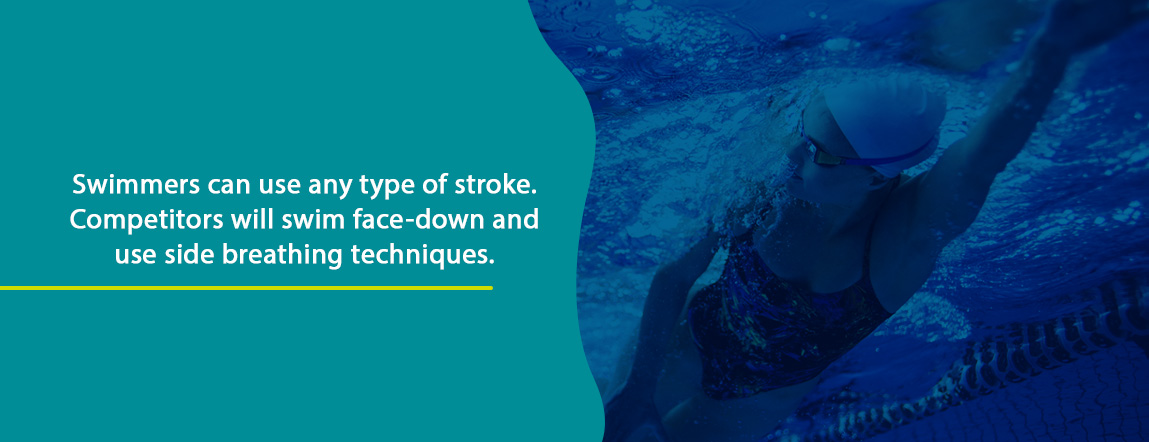 Freestyle races begin with a forward-facing dive from a starting block or the side of a pool. The only rules freestyle swimmers must account for are the following:
Freestyle races begin with a forward-facing dive from a starting block or the side of a pool. The only rules freestyle swimmers must account for are the following:
- Freestyle swimmers may not push off the bottom of the pool.
- Freestyle swimmers' bodies must break the water's surface throughout the race.
- Freestyle swimmers' heads must break the surface within 15 meters after a turn.
- Freestyle swimmers must touch the far wall with any part of their body.
- Freestyle swimmers must finish by touching the wall with one hand.
Rules for Breaststroke
The breaststroke begins with a forward start. Swimmers will swim with their bodies on their breasts for the duration of the race, except during turns after a wall touch. Then, they can make any type of turn they want. The breaststroke is reminiscent of a frog swimming through the water and consists of the following:
- Stroke: Arm movements must occur simultaneously and stay horizontal. Swimmers push their hands forward from the breast and must not pull them past the hip line. A swimmer's head must break the water for every stroke.
- Kick: Swimmers can perform a single butterfly kick at the start and after each turn. Otherwise, both legs must kick simultaneously and on the same horizontal plane. Feet must turn outwards during propulsion.
- Finish: Both hands must touch simultaneously at any position under or above the water.
Rules for Backstroke
The backstroke is unique as swimmers start in the water with their backs turned to the direction they will be swimming. Their hands must grip the edge of their launching point, and after pushing off, they must remain on their backs for the entirety of the race. Backstroke rules and regulations are lenient, with some swimmers calling the backstroke the "upside-down freestyle." Swimmers use alternating strokes and kicks throughout the race as long as part of the body consistently breaks the water's surface. They must stay on their back for the entirety of the race to avoid disqualification. Some turns allow the shoulders to move vertically, but once the turn is complete, they must resume their position. To finish, swimmers must touch the wall while still on their backs.
Rules for Butterfly
The butterfly begins with a forward-facing dive. In addition to any kind of turn, the swimmer will perform the following:
- Stroke: Swimmers must bring their arms forward over the water and pull them back under the water simultaneously. The head should consistently break the water's surface for breaths. Shoulders should be at or past the vertical position toward the breast.
- Kick: Using a dolphin kick, feet and legs must move simultaneously in an up and down motion.
- Finish: The swimmer must make the touch with both hands simultaneously at any position under or above the water.
Rules for Medley
Medleys or individual medleys are races in which swimmers use each type of stroke for one-fourth of the total distance of the race. Swimmers must abide by the specific rules for each type of stroke during that portion of the race. For instance, if a swimmer obeys the rules for freestyle, breaststroke and butterfly during those portions of the race, but turns from their back during the backstroke, they will be disqualified. Medley races demand the following:
- Swimmers must start with a front-facing dive.
- Swimmers must use the different strokes in this order: butterfly, backstroke, breaststroke then freestyle.
Rules for Relays
Relays involve four swimmers competing as a team. In a freestyle relay, all swimmers will swim however they choose. In a medley relay, each swimmer will swim their section of the race using the proper form for that portion. Freestyle relays begin with a forward-facing dive. Medley relays begin in the backstroke position and proceed in the following order: backstroke, breaststroke, butterfly then freestyle. Swimmers must wait to launch until their teammate touches the wall.
Get Ready for Your Next Race With Kiefer Aquatics
At Kiefer, customer satisfaction is our top priority. We offer swimwear for women as well as for male swimmers. We also offer a range of gear to help you prepare for and excel in your next competition. With our low price guarantee and no-hassle returns, we're sure you'll have a satisfactory online shopping experience. Browse our products today, or contact us for more information about items for your next swimming competition. 
Rio Olympics® Swimming Schedule
 The Games are upon us, teams have been selected, and rosters fleshed out. Athletes are making their final preparations to compete in Rio for the XXXI Olympiad! Here's the Rio 2016 Olympics® swimming schedule, and some other useful information you should know:
The Games are upon us, teams have been selected, and rosters fleshed out. Athletes are making their final preparations to compete in Rio for the XXXI Olympiad! Here's the Rio 2016 Olympics® swimming schedule, and some other useful information you should know:
- The swimming portion of the games will take place at the Olympic Aquatics Stadium and Fort Copacabana during the second week of August.
- Swimming events will be contested from August 6th through 13th while the open water event will be contested on the 15th and 16th.
- Michael Phelps has the potential to make history again if he should win a 4th gold medal in the 100 meter butterfly.
- Katie Ledecky also stands to make history should she win gold in 200, 400, and 800 freestyles completing a feat last achieved by Debby Meyer in Mexico City back in 1968.
There are a total of 34 events for swimmers, 17 for men and 17 for women.
- Butterfly: 100 and 200
- Backstroke: 100 and 200
- Breaststroke: 100 and 200
- Freestyle: 50, 100, 200, 400, 800 (women), and 1,500 (men)
- Individual medley: 200 and 400;
- Relays: 4×100 free, 4×200 free; 4×100 medley
- Marathon: 10 kilometers
Rio Olympics® Swimming Schedule
Swimmers will be competing at all hours to accommodate NBC and get the races on live for prime time.
HEATS
SATURDAY, AUG 6TH
Men’s 400m IM
Women’s 100m Fly
Men’s 400m Free
Women’s 400m IM
Men’s 100m Breast
Women’s 4 x 100m Free Relay
SUNDAY, AUG 7TH
Women’s 100m Back
Men’s 200m Free
Women’s 100m Breast
Men’s 100m Back
Women’s 400m Free
MONDAY, AUG 8TH
Women’s 200m Free
Men’s 200m Fly
Women’s 200m IM
TUESDAY, AUG 9TH
Men’s 100m Free
Women’s 200m Fly
Men’s 200m Breast
Men’s 4 x 200m Freestyle Relay
Men’s 4 x 100m Free Relay
WEDNESDAY, AUG 10TH
Women’s 100m Free
Men’s 200m Back
Women’s 200m Breast
Men’s 200m IM
Women’s 4 x 200m Freestyle Relay
THURSDAY, AUG 11TH
Men’s 50m Free
Women’s 800m Free
Men’s 100m Fly
Women’s 200m Back
FRIDAY, AUG 12TH
Women’s 50m Free
Men’s 1500m Free
Women’s 4 x 100m Medley Relay
Men’s 4 x 100m Medley Relay
SEMIFINALS & FINALS
SATURDAY, AUG 6TH
Men’s 400m IM – Final
Women’s 100m Fly – Semifinal
Men’s 400m Free – Final
Women’s 400m IM – Final
Men’s 100m Breast – Semifinal
Women’s 4 x 100m Free Relay – Final
SUNDAY, AUG 7TH
Women’s 100m Fly – Final
Men’s 200m Free – Semifinal
Women’s 100m Breast – Semifinal
Men’s 100m Breast – Final
Women’s 400m Free – Final
Men’s 100m Back – Semifinal
Women’s 100m Back – Semifinal
Men’s 4 x 100m Free Relay – Final
MONDAY, AUG 8TH
Women’s 200m Free – Semifinal
Men’s 200m Free – Final
Women’s 100m Back – Final
Men’s 100m Back – Final
Women’s 100m Breast – Final
Men’s 200m Fly – Semifinal
Women’s 200m IM — Semifinal
TUESDAY, AUG 9TH
Men’s 100m Free – Semifinal
Women’s 200m Free – Final
Men’s 200m Fly – Final
Women’s 200m Fly – Semifinal
Men’s 200m Breast – Semifinal
Women’s 200m IM – Final
Men’s 4 x 200m Freestyle Relay – Final
WEDNESDAY, AUG 10TH
Men’s 200m Breast – Final
Women’s 100m Free – Semifinal
Men’s 200m Back – Semifinal
Women’s 200m Fly – Final
Men’s 100m Free – Final
Women’s 200m Breast – Semifinal
Men’s 200m IM – Semifinal
Women’s 4 x 200m Freestyle Relay – Final
THURSDAY, AUG 11TH
Men’s 50m Free – Semifinal
Women’s 200m Breast – Final
Men’s 200m Back – Final
Women’s 200m Back – Semifinal
Men’s 200m IM – Final
Women’s 100m Free – Final
Men’s 100m Fly – Semifinal
FRIDAY, AUG 12TH
Women’s 200m Back – Final
Men’s 100m Fly – Final
Women’s 800m Free – Final
Men’s 50m Free – Final
Women’s 50m Free – Semifinal
SATURDAY, AUG 13TH
Women’s 50m Free – Final
Men’s 1500m Free – Final
Women’s 4 x 100m Medley Relay – Final
Men’s 4 x 100m Medley Relay – Final
The women will compete on the 15th for the open water and the men on the 16th.
50 Free World Record History
The Short Sprint Or 50 Free
At first glance, the history of the 50 Free appears as short as the race itself. And while it may not have been officially contested until the 1988 Olympics in Seoul, its origins can be traced back to the beginning of the 20th century.
1904- The Short Sprint
In the 1904 St. Louis Olympics, the short sprint, made its first Olympic appearance. The course length was only 50 Yards (about 46 Meters). At the time, freestyle meant you could choose any stroke you wanted to swim, free from any mandate of stroke style.
This was only time the 50 Free would be run in yards during the Olympics.
The 50 Free wouldn't make a return to the Olympics for another 84 years, resurfacing at the 1988 Olympics in Seoul.
The 1970's- The 50 Free Is Reborn
In the 1970's the 50 Free became an official event marked by the first recorded world records by Jonty Skinner (South Africa) at 23.86 in 1976 for the men and Kornelia Ender (East Germany) at 26.99 in 1975 for the women.
What Makes A Great Short Sprinter?
The 50 Free is all about reaction and drop dead speed. Getting off the blocks the fastest and nailing your breakout are key elements. Some sprinters just get up and go, others choose to take advantage of underwater kicking. There is no tried and true. Oftentimes swimmers will breathe once or not at all. Frequently you will see swimmers utilizing a straighter arm stroke, like a windmill. Tempo is key. The top flight at the Olympics will and have all boasted a stroke tempo well under 1.0.
Typically sprinters are a tall breed. Matt Biondi is 6'7" and Amy Van Dyken is 6'. Not a rule, just statistics. Long arms and legs are a huge plus.
50 Free World Record History
Women's 50 Free World Record Holders
In the women's event, Kornelia Ender went on to be a multiple world record holder and multiple time Olympic medalist. However her victories are heavily tainted by the East German doping scandal. Johanna Malloy (CAN) was the next world record holder in 1977 at 26.95. In 1978 it was broken again by Anne Jardin (CAN) 26.74. Two years passed then American Cynthia (Sippy) Woodhead took it down to 26.61. The world record was broken three more times in that same year (1980) Kelly Asplund (USA) 26.53, Jill Sterkel (USA) 26.32 and Sterkel again at 25.96. Less than a year later in 1981 Sterkel lowered the mark one more time to 25.79. Two years later a young superstar in the making by the name of Dara Torres (USA) took the record down to 25.69. It was quickly snapped 6 months later by Annemarie Verstappen (NED) 25.64. Torres wasn't close to being out for the count one month later she lowered the mark to 25.62 and again to 25.61. Competition in the 80's was fierce but two years passed before the record was lowered by Tamara Costache (ROM) to 25.50. Costache lowered the record an additional three times over the course of a year to 25.28. Another two years passed before the record went to Yang Wenyi of China, she was the first woman to break the 25 second barrier at 24.98 in 1988. She lowered it to 24.79 and then her teammate Le Jingyi, suspected of steroid abuse but never proven, took over in 1994 taking the 50 down to 24.51. The record held for six years. In 2000 Inge be Bruijn (NED) tied the record of 24.51 but dropped it three times in one year, The record sat at 24.13 for eight years. In 2008 one of her country women Marleen Veldhuis lowered the mark to 24.09. Swiftly the record fell below 24 seconds in the same year to Australian Libby Trickett (Lenton) in 23.97. Then Veldhuis took it back in 2009 at 23.96. Today the record is held by Britta Steffen (GER) at 23.73 swum in 2009 at the World Championships held in Rome, Italy.
Olympic Gold:
- Kristin Otto (GDR) 1988 Seoul
- Yang Wenyi (CHN) 1992 Barcelona
- Amy Van Dyken (USA) 1996 Atlanta
- Inge de Bruijn (NED) 2000 Sydney
- Inge de Bruijn (NED) 2004 Athens
- Britta Steffan (GER) 2008 Beijing
- Ranomi Kromowidjojo (NED) 2012 London
Men's 50 Free World Record Holders
On the men's side, Jonty Skinner's record of 23.86 in 1976 was passed up a year later by Joe Bottom (USA) with a 23.74. Another year passed and Ron Manganiello (USA) took it down .02 to 23.72. The record next went to Klaus Steinbach (GDR) in 1979 with a 23.70. The USA men dominated the record board for the next 7 exchanges that all occurred over the course of 18 months. First Chris Cavanaugh in February of 1980 clocked 23.66, then in April he went 23.12. Rowdy Gaines was the first man to break 23 seconds throwing down 22.96 the same day at US Spring Nationals. Then Bruce Stahl took it down further at the same meet 22.83. Four months later Joe Bottom was at it again lowering the mark to 22.83 then again to 22.71. It took a year for the next change to come, this time from Robin Leamy at 22.54. His record would hold for four years. Dano Halsall (Switzerland) swam a 22.52 and held the record for a few months before Tom Jager (USA) took it down to 22.40. Matt Biondi held the world record next at 22.33 then it went back to Jager at 22.32. Jager lowered his mark once more in 1988 to 22.23. Then a South African named Peter Williams jumped in the middle of the USA boys taking the record down to 22.18. Biondi broke the record one last time with an Olympic gold medal in Seoul touching in at 22.14. Jager wasn't done yet and one year later swam a 22.12 then became the first man under 22 seconds in 1990 blasting out a 21.98, then a 21.81. 10 years later (goes to show how epic the Jager/Biondi exchange truly was) Russian Alexander Popov swam a 21.64 in 2000. Another 8 years pass until the record is broken by Eamon Sullivan (AUS) in 2008 with 21.41 and again the next day with 21.28. Frederick Bousquet of France let the record stand a month before he lowered it to 20.94 becoming the first man under 21 seconds. The record is held now by Cesar Cielo of Brazil from 2009 with a 20.91. This progression shows how dominant and truly excellent Tom Jager, Matt Biondi, and Alexander Popov were. Ahead of their time and completely relevant nearly 15 years later.
Olympic Gold:
- Matt Biondi (USA) 1988 Seoul
- Alexander Popov (EUN) 1992 Barcelona
- Alexander Popov (RUS) 1996 Athens
- Anthony Ervin/Gary Hall Jr (USA) 2000 Sydney
- Gary Hall Jr (USA) 2004 Athens
- Cesar Cielo (BRA) 2008 Beijing
- Florent Manaudou (FRA) 2012 Athens
There are more than a few standout characters from this particular event. Outside the epic battle that was Jager/Biondi/Popov there was Gary Hall Jr. He made a spectacle of his personal competitive nature often walking to the racing blocks in a boxer's attire and then shadow boxing. Often criticized for showboating Hall brought much needed attention to our sport, even though it wasn't always good, he believed any attention was better than none. Popov currently sits on the IOC board and helps make decisions for future Olympics. Amy Van Dyken of 1996 Olympic fame was often criticized for spitting in her competitors lines before a race.
Who will break the record next? On the men's side, past record holders and current are still competing. Cielo and Bousquet have been in the 21 mid range recently, but not close to breaking the 21 barrier. So has gold medalist Manaudou. James Magnussen (AUS) could be in the mix but has publicly been battling a variety of issues.
The top time in the past year for women stands with Kromowidjojo (NED) at a 24.05, with Australian Cate Campbell close on her heels at 24.13. The top 10 times are all under 24.61 but not too close to Steffan's world record of 23.73. Steffan herself has a best of 24.76 landing her in a three way tie for 13th this past year.
Olympic Swimming Comebacks
Olympic Swimmer Comeback Rumors
Rumors sometimes carry negative connotations, but not when we are dreaming about our decorated athletes returning to the competition pool after retiring or a short lived hiatus. So here we go, Rio is just around the corner and we would love to see some of our favorites make the trip.
Michael Phelps - The Big Guy
 Rumors have reached 'beating a dead horse' status, but everyone would love to see him return to the pool. A full schedule of events is unlikely, but relays and a modified run of events are solid possibilities. Seeing Phelps return to peak condition in events like the 400 IM and 200 Fly may be a stretch for a man who is a few years older and less committed to training towards his past favorite events, but the potential for comeback success is undeniable.
Rumors have reached 'beating a dead horse' status, but everyone would love to see him return to the pool. A full schedule of events is unlikely, but relays and a modified run of events are solid possibilities. Seeing Phelps return to peak condition in events like the 400 IM and 200 Fly may be a stretch for a man who is a few years older and less committed to training towards his past favorite events, but the potential for comeback success is undeniable.
It would not be a stretch for Phelps to make the US team as a relay-only swimmer. By competing in the 100 Fly, 100 and 200 Free at the US Trials, he could potentially be a member on all three Olympic relays. And with strength of the US Olympic Swim Team program, he could add at least three more medals to his already heroic haul (in relays around mind you).
Should he compete individually, speculation stands to reason he may favor shorter events. The 100 Fly and 100 Free, as mentioned above, are possibilities. What about the 200 IM or even a 100 Back? The combinations of swims he could excel in are numerous, but all we have is a rumors and Michael's circumspection.
Brooke Bennett - The Veteran
Brooke Bennett is a three time Olympic gold medalist from two Olympic games. She braved the comeback trail once before (post shoulder surgery) in the 2004, narrowly missing the team in her signature race, the 800 Free.
This time around, Bennett is taking a different approach. Training with Randy Reese at Clearwater in Florida, Bennett is hoping to make the Olympic team in open water competition. Training alongside a young Becca Mann, who already has experienced open water success, the pair are likely to be highly competitive at Trials.
Katie Hoff - The Fighter
Katie Hoff is an amazing young woman with talent and tenacity both in and out of the water. We last saw her compete in the 2012 Trials, and now she seems to be making a push towards being competitive once more. Swimming in a late November 2013 meet in Florida, Hoff posted a solid time in the 200 Free (1:45.93).
Rooting for Hoff is a no-brainer. Who couldn't relate with a likable young woman trying to achieve her goals.
Dagny Knutson
Then there is Dagny Knutson. Her path has been a battle scarred one, but like Hoff she has a strong backing of fans who wish her the best in the water and out. Whether or not Knutson will be making a return to the pool is completely up in the air. She has not been competing and has simply been focusing on getting her life back on track.
Dara Torres
Comebacks are a tricky thing, but they have been and will continue to be done successfully. When I hear the word comeback, Dara Torres always comes to mind. She is likely one of the biggest comeback success stories, and at the age of 41! Torres is a 12 time Olympic medalist spanning the 1984, 1988, 1992, 2000, and 2008 Olympics.
Bring on The Trials
As we get closer to Olympic Trials, our support and best wishes go out to all competitors- rookies and veterans alike!
Who would you like to see make a comeback? Let me know what you think.
See you at the pool - be it Oympic or otherwise!
Emily



